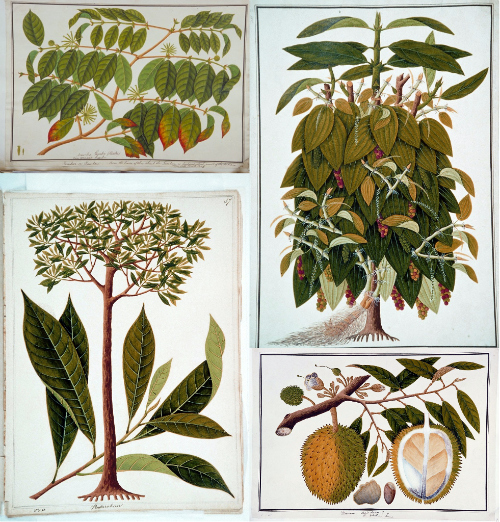Facts About William Farquhar Collection of Natural History Drawings
The William Farquhar Collection of Natural History Drawings is an exquisite assemblage of 477 watercolor illustrations depicting the flora and fauna of Malacca and Singapore. These artworks were created between 1819 and 1823 by skilled, though anonymous, Chinese artists commissioned by William Farquhar. Farquhar, who was the Resident and Commandant of Singapore at the time, engaged these artists to document the region’s natural splendor.
Initially, these drawings were donated to the Museum of the Royal Asiatic Society, with eight volumes presented in 1826. In 1995, the collection was acquired by the National Museum of Singapore, facilitated by Goh Geok Khim, who purchased it for S$3 million at a Sotheby's auction in 1993. By 2011, the collection’s value had soared to an estimated $11 million.
Each drawing is meticulously detailed and holds significant scientific value, featuring both the scientific and common names of the depicted specimens in Malay, and occasionally in English. The illustrations were mounted on European paper, with some adorned with blue borders while others were frameless, suggesting the involvement of at least two different artists.
However, the collection is not without its controversies. The quality of the drawings is inconsistent, making some specimens challenging to identify. There have been noted discrepancies in the depictions of certain species, raising questions about the accuracy and observational skills of the artists.
Despite these issues, the collection has garnered substantial scholarly attention. A notable publication, "Natural History Drawings: The Complete William Farquhar Collection, Malay Peninsula 1803–1818" delves into the artistic styles and characteristics of the potential artists. Additionally, two volumes have been released to showcase these works: "The William Farquhar Collection of Natural History Drawings" (1999), featuring 141 illustrations, and a comprehensive edition including all 477 works, published in 2010 by Editions Didier Millet and the National Museum of Singapore.

 Malaysia
Malaysia